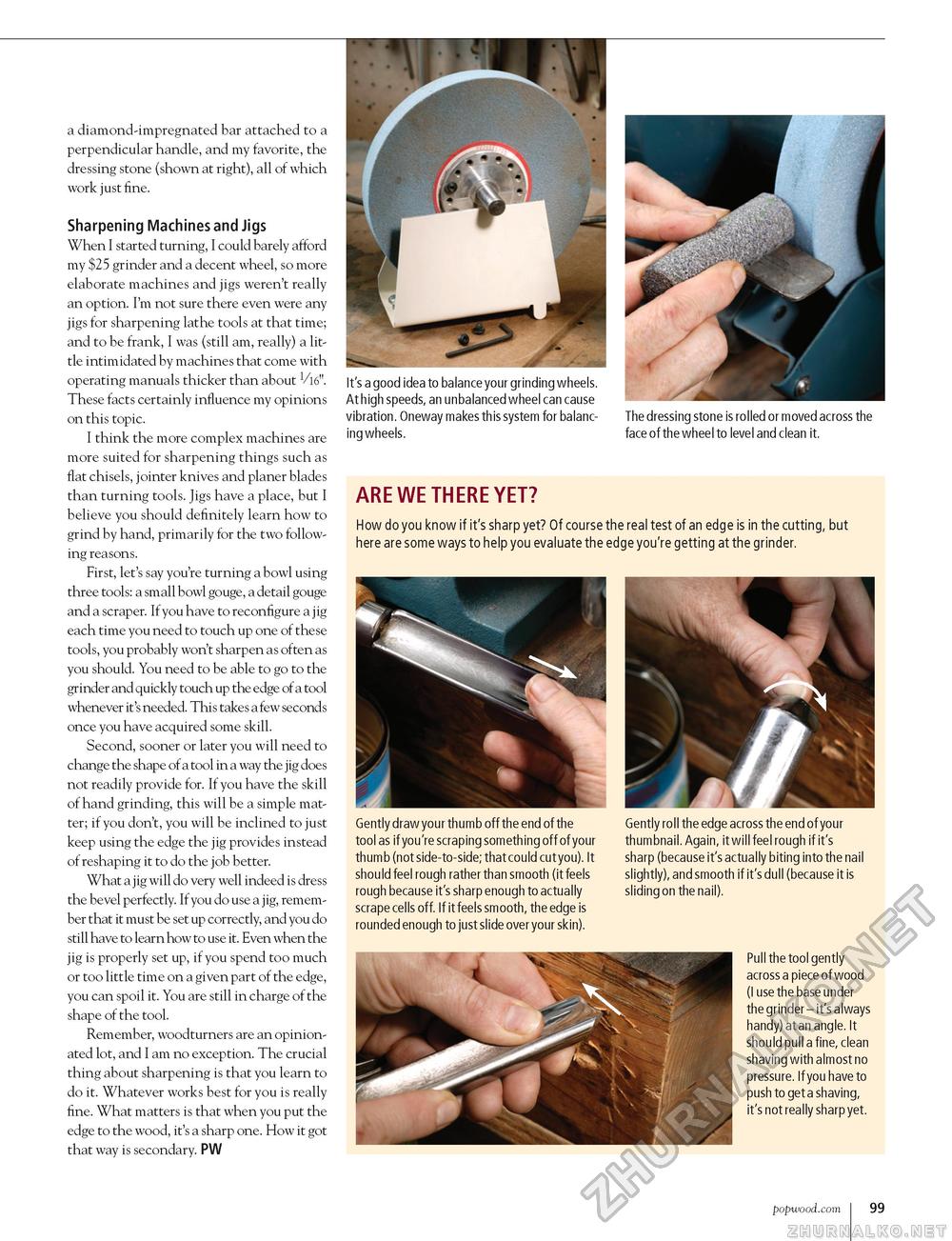Popular Woodworking 2004-11 № 144, страница 100
a diamond-impregnated bar attached to a perpendicular handle, and my favorite, the dressing stone (shown at right), all of which work just fine. Sharpening Machines and Jigs When I started turning, I could barely afford my $25 grinder and a decent wheel, so more elaborate machines and jigs weren't really an option. I'm not sure there even were any jigs for sharpening lathe tools at that time; and to be frank, I was (still am, really) a little intimidated by machines that come with operating manuals thicker than about V16". These facts certainly influence my opinions on this topic. I think the more complex machines are more suited for sharpening things such as flat chisels, jointer knives and planer blades than turning tools. Jigs have a place, but I believe you should definitely learn how to grind by hand, primarily for the two following reasons. First, let's say you're turning a bowl using three tools: a small bowl gouge, a detail gouge and a scraper. If you have to reconfigure a j ig each time you need to touch up one of these tools, you probably won't sharpen as often as you should. You need to be able to go to the grinder and quickly touch up the edge of a tool whenever it's needed. This takes a few seconds once you have acquired some skill. Second, sooner or later you will need to change the shape of a tool in a way the jig does not readily provide for. If you have the skill of hand grinding, this will be a simple matter; if you don't, you will be inclined to just keep using the edge the jig provides instead of reshaping it to do the job better. What a jig will do very well indeed is dress the bevel perfectly. If you do use a jig, remember that it must be set up correctly, and you do still have to learn how to use it. Even when the jig is properly set up, if you spend too much or too little time on a given part of the edge, you can spoil it. You are still in charge of the shape of the tool. Remember, woodturners are an opinionated lot, and I am no exception. The crucial thing about sharpening is that you learn to do it. Whatever works best for you is really fine. What matters is that when you put the edge to the wood, it's a sharp one. How it got that way is secondary. PW vibration. Oneway makes this system for balanc- The dressing stone is rolled or moved across the ing wheels. face of the wheel to level and clean it. ARE WE THERE YET? How do you know if it's sharp yet? Of course the real test of an edge is in the cutting, but here are some ways to help you evaluate the edge you're getting at the grinder. Gently draw your thumb off the end of the tool as if you're scraping something off of your thumb (not side-to-side; that could cut you). It should feel rough rather than smooth (it feels rough because it's sharp enough to actually scrape cells off. If it feels smooth, the edge is rounded enough to just slide over your skin). Gently roll the edge across the end of your thumbnail. Again, it will feel rough if it's sharp (because it's actually biting into the nail slightly), and smooth if it's dull (because it is sliding on the nail). Pull the tool gently across a piece of wood (I use the base under the grinder - it's always handy) at an angle. It should pull a fine, clean shaving with almost no pressure. If you have to push to get a shaving, it's not really sharp yet. popwood.com 99 |








